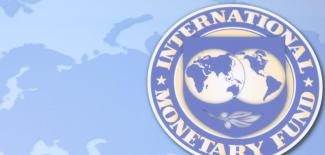
IMF's World Economic Outlook
Earlier this week, the International Monetary Fund (IMF) issued an updated World Economic Outlook, keeping its global forecast unchanged since April. It continued with an optimistic prediction that the world economy will grow 3.9% through 2019, but warns that expansion will be less synchronized, with risks tilted to the downside. 1 The IMF believes that near-term momentum in the US will continue, but is less optimistic about the eurozone, Japan, Latin America, and the U.K.
Despite the unwavering forecast, overall sentiment undoubtedly has changed. In April, the IMF reported that the global economic upswing had become broader and stronger, pointing to a notable rebound in global trade during 2017, which had increased to an estimated real growth rate of 4.9%. 2 However, much has changed since then. Several trade spats later, the IMF has changed its sentiment significantly. Earlier this week its chief economist warned that ongoing trade tensions are the greatest near-term threat to global growth. In fact, the IMF’s internal models suggest that if round two of levies and existing trade threats comes to fruition, it would cost global growth approximately 0.5%, amounting to an estimated $430 billion in lost Gross Domestic Product (GDP) by 2020. 3
Although the first round of tariffs that has been imposed and gone into effect is small relative to overall trade flows and gross domestic product (GDP), it is clear that a civil resolution is nowhere in sight. Several outstanding threats remain, including another impending round of tariffs imposed by the US on automobiles from the European Union (EU), as well as an additional $200 billion worth of goods from China, ranging from fish to telephone components. Both China and the EU were quick to announce their willingness to retaliate and implement countermeasures, quickly escalating the severity of the situation.
The rest of the world’s willingness to preserve free trade may offer some consolation to the situation. On Tuesday, the EU did an about-face and signed its largest bilateral trade deal with Japan, which is estimated to create an open-trade zone for more than 600 million people. The EU and Japan account for approximately one-third of the world’s GDP; and even though that is just a fraction more than US’s GDP alone, the stance against protectionism seems to resonate strongly among the rest of the world, providing some solace in today’s tense atmosphere.
Ling-Wei Hew, CFA
AVP, Senior Investment Analyst
1 IMF World Economic Outlook, July 2018: Less Even Expansion, Rising Trade Tensions
2 IMF World Economic Outlook, April 2018: Cyclical Upswing, Structural Changes
3 IMF Blogs July 18, 2018: Shifting Tides: Policy Changes and Opportunities for the G-20

